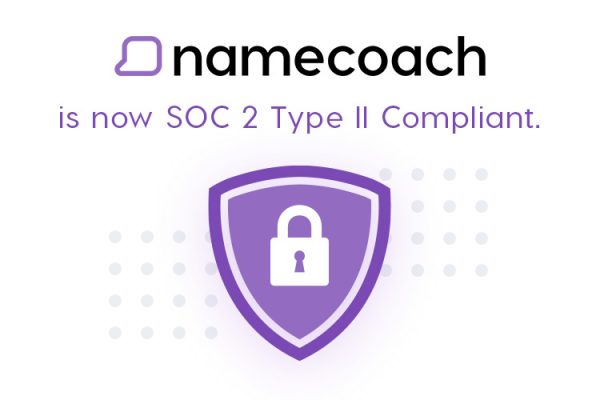
Businesses and employees are more online and interconnected than ever before. According to a report, 91% of companies currently have a digital-first business strategy, while 86% of small busniess owners in the U.S. believe that technology is critical to helping their business survive or thrive.
Ubiquitous technology impacts employees as well. According to a study, 85% of U.S. adults go online at least once a day, and 31% say they are online “almost constantly,” making our online environments less a place we visit than a reality we inhabit all the time.
This is both an opportunity and a challenge. While technology allows businesses to support digital-first customers, connect across disparate locations to empower remote or hybrid work and integrate tools that enhance communication and collaboration, it also presents unique risks as data privacy, cybersecurity and network integrity pose real risks to companies of every size in every sector.
Last year, more than 1,800 companies experienced a data breach. The consequences of failure can be costly and far-reaching. IBM’s most recent “Cost of a Data Breach” analysis found that the average data breach will cost U.S. companies $9.44 million while the reputational damage and opportunity cost can cascade for months or years.
That’s why creating a safe digital environment where privacy is protected, data is secured and operations are empowered is an important priority for companies in this modern landscape.
Characteristics of a Safe Digital Environment
Safe and secure digital environments are critical, but they don’t happen by accident. Rather, they are created and cultivated as leaders pursue the priorities that matter most. Primarily, this means developing privacy, security and emotionally safe online spaces.
For customers and companies, privacy is a top priority. According to a study by MAGNA Media Trials and Ketch, 74% of respondents said that data privacy was one of their top values, and a Quosent study determined that 94% of consumers want control over the information they share with companies.
In response, government agencies around the world are passing and implementing data privacy laws restricting data collection means and methodologies. According to Gartner, three-quarters of the global population will be covered by personal data privacy regulation by next year, prompting companies to adjust their practices to maintain compliance.
At the same time, customers and companies are prioritizing cybersecure online environments. More than one-half of companies plan to increase IT spending this year. Global cybersecurity and risk management spending are expected to grow by 11% in 2023, surpassing $188 billion, a significant sum that reflects the complexity of providing and maintaining secure online ecosystems.
Finally, companies are focused on creating emotionally safe online environments. This includes providing places where everyone can communicate freely and openly, conduct respectful interactions and collaborate in inclusive environments.
Simply put, an emotionally safe online ecosystem is one that prioritizes the well-being of its users and fosters a sense of community and support. There are several reasons that companies should care about these features. Most obviously, the financial risk is significant as recovery costs, fines and lost business can create cascading bottom-line losses and reputational damage for businesses of every size in every sector.
Perhaps most importantly, creating safe and secure digital environments is the right thing to do, which should be enough to make it a priority for every business.
Safe and secure digital environments are critical, but they don’t happen by accident.
Delivering Results with Compliance Training
Creating safe and secure online environments is often the product of compliance training that updates employees on the latest regulatory standards and operational best practices to inform their real-world behavior.
Fortunately, many employees are eager to learn. More than one-half of employees say they need to develop new skills in the next year to remain competitive in the workforce.
Of course, companies need to understand the most relevant and impactful privacy standards to elevate their online environments. Start by identifying the crown jewel of data that keeps your company operational. For example, if your company collects Personally Identifiable Information (PII), Europe’s General Data Protection Agency (GDPR) or California’s CCPA may be particularly relevant. Similarly, if your organization collects health-related information, health insurance portability accountability act (HIPAA) guidelines will be critical.
Additionally, consider how your company uses its data or interacts with its online ecosystems to determine if specific compliance standards, like SOC 2 Type II, can improve overall data management practices and company reputation.
Lastly, take steps to ensure that employees understand evolving safety and security policies, justify their implementation through intentional communication to achieve buy in.
Safe, Secure and Better in 2023 and Beyond
Creating a safe and secure digital environment is crucial for businesses in today’s interconnected world, where technology plays a critical role. The risks of data breaches, cybersecurity threats and network integrity issues can have far-reaching and costly consequences for companies. Therefore, it’s essential to prioritize privacy, security and emotional safety in online spaces to protect customers and employees. Compliance training is a vital tool that can help businesses integrate the latest regulatory standards and operational best practices to elevate their online environments.
By doing so, companies can not only mitigate risks but also foster a sense of community and support, which is the right thing to do. With intentional communication, buy in and a commitment to continuous learning, companies can create a safe, secure and better digital environment for the future and beyond.

Carmen Collins
Carmen Collins is a true veteran in the tech space, demonstrating approximately 20 years of experience in sales and cybersecurity. During her tenure as Namecoach’s director of information and information technology (IT) security, she’s lead the implementation of a strategic and comprehensive information security program while overseeing the technology infrastructure of the company.
Article Source:
https://trainingindustry.com/articles/compliance/why-compliance-training-is-crucial-for-a-safe-and-secure-digital-environment/

